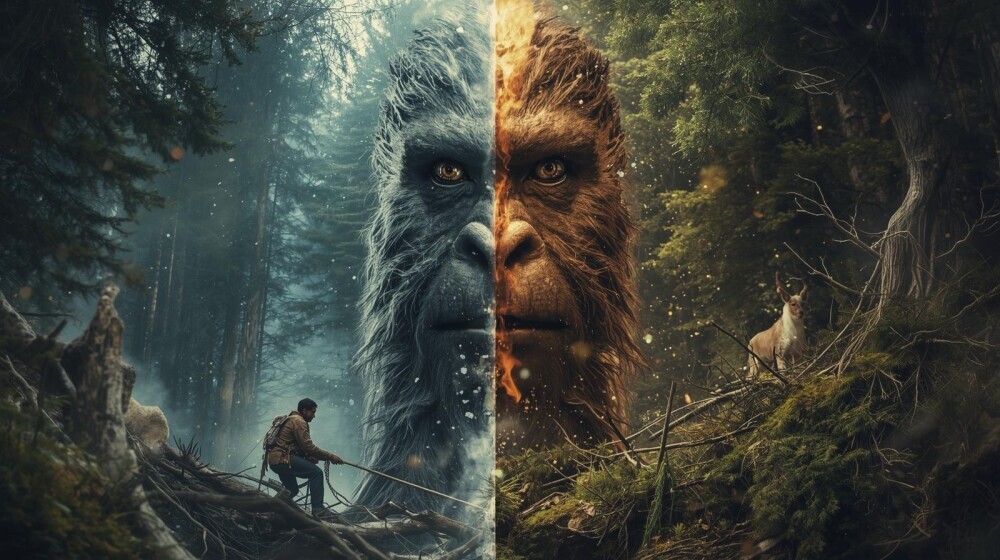
When I dig into the Sasquatch story, I find two vibrant traditions that refuse to blend into one predictable narrative. It’s like watching two trails flowing side by side they both have depths worth exploring. On one bank, there’s the rich tradition of Indigenous wisdom that paints Sasquatch as a guardian and teacher. These stories animate the forest with respect and denote a harmony between man and nature.
On the other side, you got the scientific pursuit often intense and relentless. It’s filled with researchers and enthusiasts, determined to unmask the mystery with concrete evidence. Their toolkit includes high-tech cameras and footprint casts, dominated by a desire to prove what others merely suggest. But here’s the kicker: without embracing both perspectives, we miss the real magic of the story.
Balancing these two worlds isn’t just a theoretical exercise. It’s about accepting that evidence and myth together make the portrait of Sasquatch far richer. Think of it as hearing a great song in stereo. For me, walking the line between these perspectives has been more than rewarding it’s illuminated trust, respect, and patience in ways a blurry photo or footprint can’t capture.
Recognizing the value in both realms gives us a fuller glimpse of truth. It teaches us that certain mysteries can’t be wholly owned by science or story alone. In connecting with both, we don’t just inch towards understanding Sasquatch; we gain insight into our relentless curiosity about the world and the unyielding urge for discovery. Balancing these two worlds isn’t just a theoretical exercise.“

Wildfoot Disclosure & Invitation
As an Amazon Associate I earn from qualifying purchases.
Some of the links in my blog posts are affiliate links to Amazon. This means I may earn a small commission if you decide to make a purchase, at no extra cost to you. These links are here to explore freely, with no pressure or obligation.
My blogs cover everything from Bigfoot theories and paranormal research to survival tips and personal stories. When I mention a book, tool, or piece of gear, it’s because I believe in it, use it, or have taken time to research it thoroughly.
You’ll also see connections to my other platforms, including TrailForge Gear and Paranormal Curiosities Realm all part of the same mission: to explore the unexplained and share what I find.
Thanks for reading, sharing, and supporting independent storytelling.
Shawn Thomas
Author & Creator of The Hidden Bloodlines of Bigfoot
Founder of Wildfoot Explores
The Indigenous Sasquatch: Guardian, Teacher, Elder
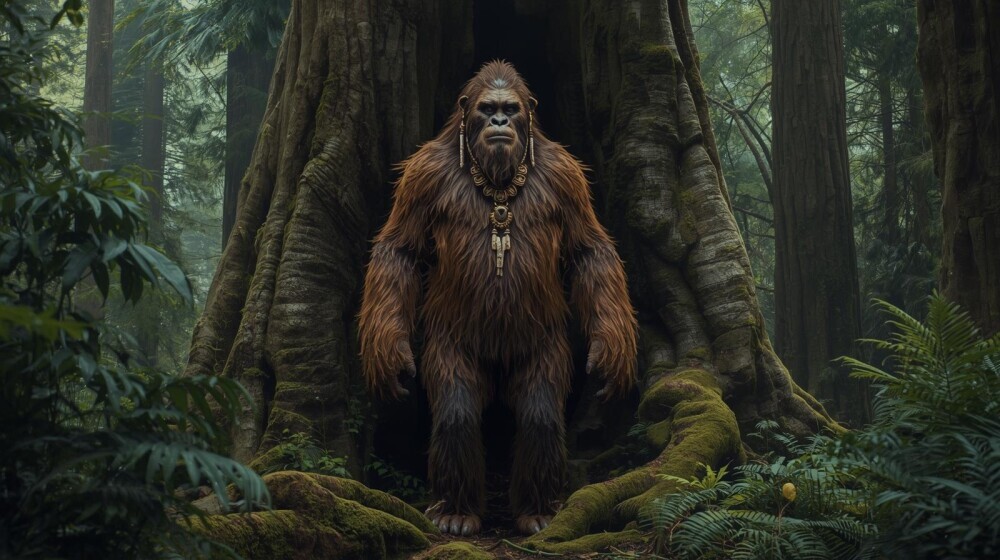
In the heart of countless Indigenous communities, tales of Sasquatch circulate like whispers on the wind, shaping the way people interact with the land. Long before “Bigfoot” captured headlines, Sasquatch existed as an essential figure in the lore and lifestyle of many tribes across North America. These stories don’t just entertain; they offer wisdom, acting as a moral compass and cultural keystone.
Take the Sts’ailes First Nation for instance. Their term “sasq’ets” the hairy man doesn’t refer to a monster lurking in the woods but to an ancient people choosing solitude and nature over chaos and noise. Similarly, the Cherokee’s Tsul ‘Kalu stands as the Lord of the Game, a reminder that balance and respect for wildlife maintain nature’s equilibrium. These figures demand respect not through force, but through shared wisdom and inherent guidance.
What intrigues me most is how these narratives are more than superstition they’re how Indigenous communities pass down laws of the land, literally. Bukwas, from the tales of the Kwakiutl, teaches the dangers of straying from known paths as a way to instill caution and respect into young listeners. These aren’t just stories to scare children; they’re life lessons wrapped in legend.
Understanding this perspective is key to truly grasp the Sasquatch legend. Through patience, humility, and a bit of silence, these tales beckon us to listen teaching that the forest is alive, its lessons can be profound, and it nurtures an old wisdom waiting to be shared. Bridging the gap involves more than hearing these stories; it’s about respecting them and recognizing their value in our understanding of natural and cultural worlds.
The Birth of Bigfoot: The Hunt for Tangible Evidence
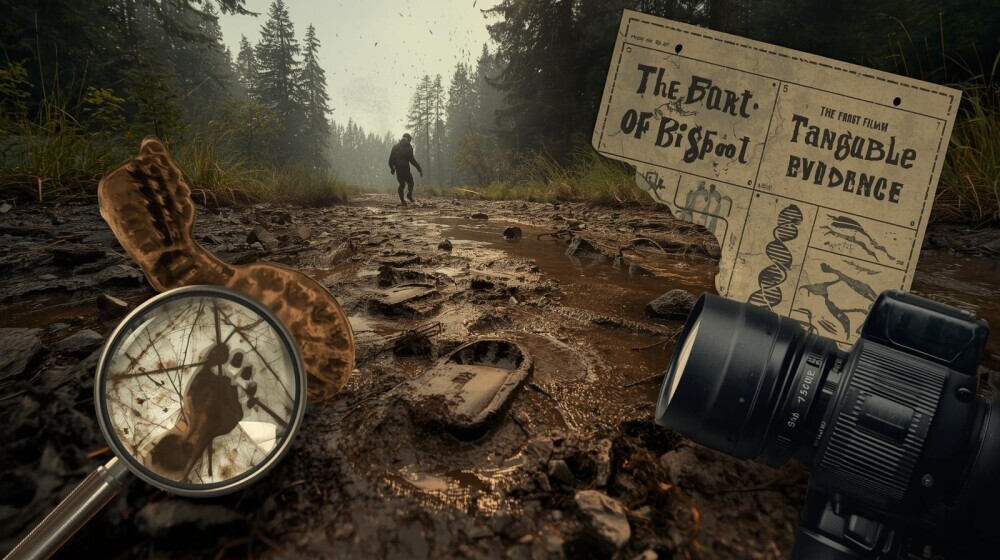
While the Indigenous stories provide a rich fabric of mystery and tradition, the scientific narrative tells a different kind of tale. It all kicked off in the late 1950s, when giant tracks made headlines in Northern California. Dubbed “Bigfoot,” this new name added a modern twist to the age-old creature and sparked a fervor that turned legend into hunting sport.
The Patterson–Gimlin film shot in 1967 became infamous for showing what many claimed to be Bigfoot stepping through a creek bed. For years, every frame of that footage has been scrutinized, dissected, and debated by believers and skeptics alike. Every heavy footfall captured on shaky film left footprints in the hearts of those seeking the ‘proof’, driving countless enthusiasts into the wild with casting equipment and cameras at the ready.
Science, though, demands proof beyond folktales and fuzzy footage. The mantra goes, “extraordinary claims need extraordinary evidence.” Critics point out the lack of a body or verified DNA, and many sightings are written off as misidentified wildlife. Bears, shadows, even tall tales spun around campfires could explain sightings sometimes truth is stranger than fiction, but sometimes fiction fills gaps truth leaves open.
Being caught between discovery and cynicism isn’t a one-time stop; it’s a repeated cycle. Skeptics emphasize hard evidence. Passionate believers fill forums and hunt for signs in the woods. While scientific methods give weight to cautious conclusions, this pursuit touches something more profound the endless human desire to uncover the unseen and not be alone in the universe.
It’s a balance, a play of proof and mystery. The quest for Bigfoot might not have yielded a definitive result yet, but every step taken adds to this saga that compels us to look beyond the concrete and embrace the mysterious whispers of the woods.
Between Two Realms: Living the Sasquatch Narrative

Traveling amidst the intersections of myth and science, I find myself navigating an intriguing path. Picture the endless roads and ridgelines, a detective’s notebooks in hand, and an imagination fueled by stories passed down through generations. This journey digs deeper than just collecting evidence or hearing folklore; it’s about blending these two narratives into something cohesive and enriching.
From Indigenous teachings, I’ve learned the importance of approaching every encounter be it with nature or people—with respect and an open heart. Each story offers lessons on living harmoniously with our environment. But here’s where it clicks for me: embracing those stories doesn’t mean discarding empirical logic.
In the pursuit of balance, I nod to the scientific methods as well. A skeptical eye can reveal much, adding weight to the argument for evidence and rigorous observation. But this point of view has a complementary role, not a conflicting one, when placed alongside ancient wisdom. Good science matches its respect for facts with reverence for the wisdom that defies measure.
To straddle both realms, I keep my ears alert and eyes wide open, acknowledging the teachings behind Indigenous narratives while evaluating evidence with integrity. This approach isn’t about hammering out inconsistencies but about weaving them into a broader understanding of Sasquatch’s mysterious presence. It cultivates curiosity and invites questions that dare us to seek answers while honoring what lies beyond our current grasp.
Living the Sasquatch narrative in this way is about switching between worlds smoothly, hearing both their songs, feeling their harmonies resonate. Together, they bring the legend into a richer focus, a testimony to the truths that stand outside institutionalized knowledge. So, as I step forward, I keep both ears tuned one to the ancients and the other to the test tubes listening to what this phenomena teaches anew each day.
The Enduring Power of the Sasquatch Legend

The Sasquatch story isn’t just hanging around; it’s thriving, capturing minds and hearts across generations. On paper, it might seem like a mismatch of folklore and elusive facts, but that’s precisely what keeps it alive and kicking in our collective psyche. It resonates deeply because it scratches an itch the human urge to explore beyond the tangible fences erected by modern life.
What keeps this legend vibrant is its ability to engage both sides of our nature. Part of us longs for a world with mysterious forces and age-old wisdom. Somewhere deep down, we wish for figures in the forest, guiding and challenging us with ancient knowledge, untethered from our digital realm’s constraints. Yet another part craves the clarity that comes with scientific validation a desire to pin down what defies comprehension.
Mix these instincts, and you get a story that keeps evolving but never fading. It satisfies the dreamer searching for magic and the investigator hunting solvability. In many ways, these opposing desires keep the Sasquatch narrative in perpetual motion. It’s a dance we’ve been doing forever, questing for mystery while demanding answers, and the legend of Sasquatch invites us to find peace with both impulses.
This tale speaks to big questions about our place in the universe and whispers about things we might never fully grasp. It challenges us to hold two truths imagination and investigation in a single breath. So, when you ponder why this particular creature endures, recognize it rides the current of human nature itself, an enduring force that intrigues both ancestor and scientist alike.
As we forge forward, whether or not Bigfoot steps into the spotlight with irrefutable evidence, the value of the legend still holds. It teaches us to respect the wonder in not knowing, the thrill in the hunt, and the freedom in keeping an open mind. The heart of the Sasquatch tale may still beat in unfamiliar rhythms, enticing and elusive, but it offers more than just a question. It provides a map of understanding between the seen and the unseen.
Where I Stand: Embracing the Enigma
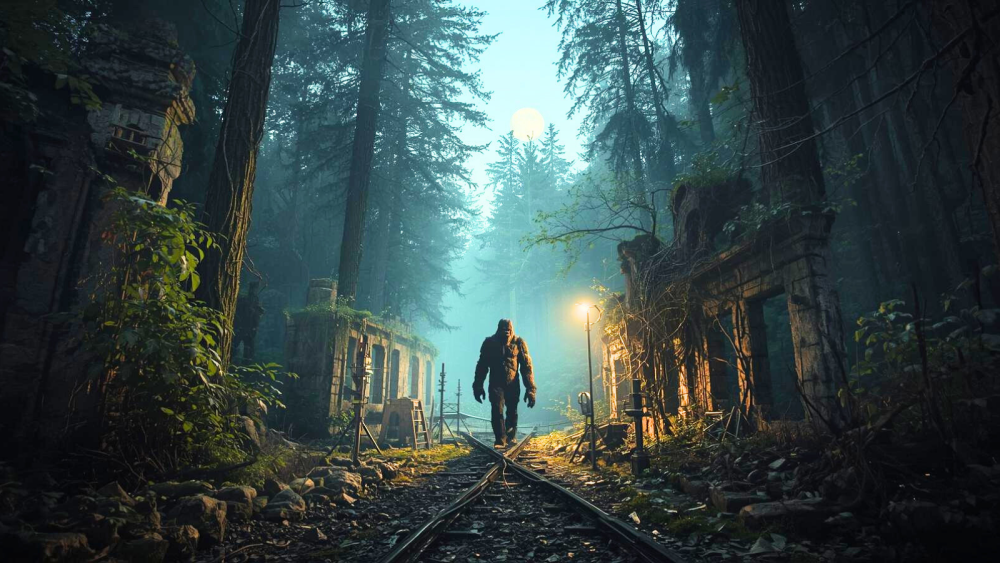
If you’re wondering what Sasquatch is to me, here’s how I see it. It’s more than just footprints or legends whispered in the wind. To me, it’s a narrative that challenges us to respect and remember. A figure that, whether seen or unseen, demands we approach the world with more than just a camera or a science kit it’s about blending both heart and mind in search of truth.
I like to imagine this legend as a doorway a mystery that sits at those crossroads between ancient wisdom and modern inquiry. It’s a reminder that our quest for understanding should come with a good dose of humility. Sometimes, admitting what we don’t know opens us up to learn what we really should.
When someone shares their story of an encounter, I believe it touches a place in their soul long before words hit their lips. It’s in those moments, around campfires or under starlit skies, that sharing becomes powerful. For skeptics out there, a dash of curiosity won’t hurt. Accept the mystery with an open mind and the forest, in its own time, might reveal more than you’d expect.
For me, the tale of Sasquatch is a journey worth embracing. It’s that persistent call to explore further, question deeply, and hold wonder and skepticism together in equal measure. It’s a lesson in staying open to possibilities beyond what we see or can explain. Until answers come in their full form, I’ll keep hunting for shadows at dusk, listening to the whispers of the woods, and cherishing the stories we’ve yet to tell. This is how Sasquatch speaksa conversation with the mystery of the world, always ongoing.
Ready to Keep Walking the Trail?
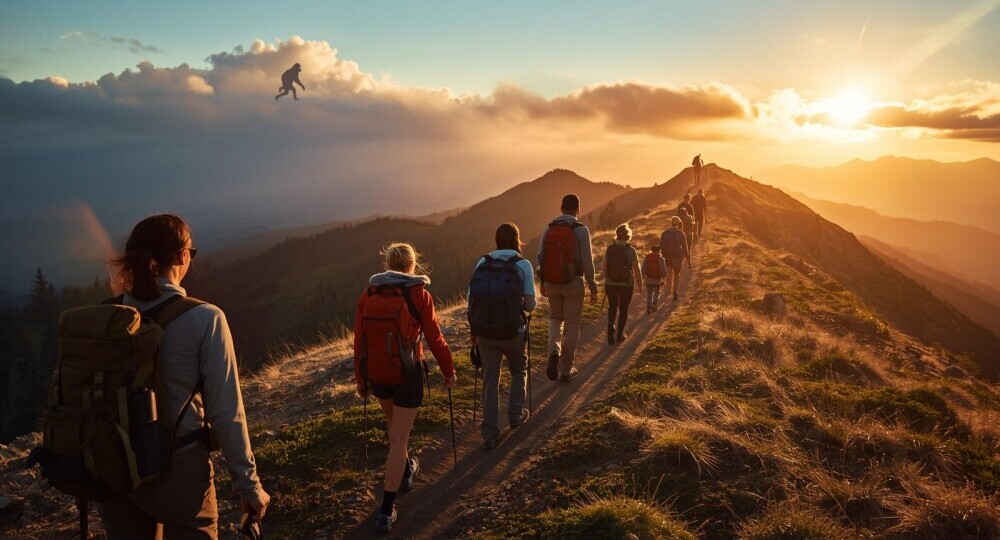
🦶 Explore the Wildfoot Book Library
Discover real encounters, hidden truths, and generational wisdom in the full Wildfoot series.
👉 Visit the Library »
📖 Share Your Story or Encounter
Had an experience you can’t explain? Tell it. Your voice matters here.
👉 Submit Your Encounter »
🪵 Catch Up on the Full Blog Archive
From theories and laws to legends and lore there’s always a new path to follow.
👉 Read More Blogs »
This really got me thinking – have you found that people who approach Sasquatch from purely one perspective (either just the Indigenous wisdom side OR just the scientific evidence side) miss something important?
I’m curious if you’ve noticed a difference in how encounters are described by people who embrace both worldviews versus those who are firmly planted in just one camp. Does the “stereo” approach you mention actually change what people experience or how they interpret it?
Thanks, Linda I really appreciate this comment because that’s exactly the kind of question that sits at the heart of why I wrote this post.
And yes, I’ve seen a huge difference in how people describe their experiences based on the lens they’re using. Folks who lean strictly on the scientific side tend to focus on physical details footprints, distance, gait, size, behavior. It’s all measurable. But it often stops there.
On the other side, those who embrace Indigenous or spiritual teachings don’t just describe what they saw they describe what they felt. The energy. The silence. The way the forest suddenly changed. There’s a deeper awareness of the encounter, like it meant something more than just biology.
But when someone stands in both worlds science and spirit that’s where it gets interesting. Their stories often come with more layers, more openness, and sometimes even clarity that’s hard to explain. It’s like they can hear in stereo, not just one speaker.
So yes I believe it absolutely changes how the encounter is experienced and interpreted.
Thanks again for this insight. These are the conversations that push the story forward.
I love how you weave both Indigenous wisdom and scientific inquiry into a single narrative—it really shows that the legend isn’t just about proving or debunking, but about understanding our relationship with the unknown.
In your experience, have you found that people respond differently to the Sasquatch story when you emphasize the cultural and spiritual aspects versus the scientific pursuit?
Thank you so much, Jenny that means a lot. I’ve always believed the Sasquatch story is less about solving a mystery and more about sitting with it. And yes, the response definitely shifts depending on which side of the story I lean into.
When I highlight the cultural and spiritual side especially the Indigenous perspectives people tend to slow down. They reflect more. There’s a reverence that enters the conversation. But when I focus on the scientific side, folks start analyzing, comparing, and hunting for patterns or proof. It becomes more of a detective story.
What’s really powerful is when those two sides meet in someone when a person starts with skepticism but opens up to the possibility that this legend carries meaning, not just mystery. That’s when it really sticks.
Curious to know which side speaks more to you?
Shawn